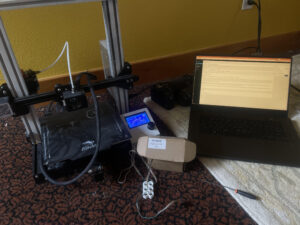Week 8 – Shipping and Sketching
Platon B -
Hello Mighty Mustangs!
This week is more of a transitionary week as I’m waiting on the copper wiring, resin, and circuitry to arrive before.
Since then, I’ve been making smaller and smaller iterations of the initial prototype of my braille cell. I’ve since made 3 different models, each with their own problems and advantages. The problem I’m encountering is that there is friction between the rotating CAMs and its respective housing. Due to the layer lines in the print, the two pieces of plastic end up rubbing against each other and creating too much friction for the CAMs to rotate when activated. In order to solve this, I can either try some sort of lubricant (A.K.A plastic safe oil) or find a more reliable way of printing. Of course, resin will help a lot with this issue, but there is still a notable amount of friction I expect, even with printing.
Another alternative to this problem of friction would be having some sort of bearings at each braille dot, but I imagine this would be much too costly and impossible to upkeep. Of course, I’m open to any other suggestions in the comments, and I’d love to hear an alternative on how to have tiny parts spin more freely in the braille display.
As for now, I will keep making new models in CAD and waiting on the shipment of products for my final prototype. If anyone’s curious, here’s my current modeling setup in my room (trust me I know it’s messy!):


Comments:
All viewpoints are welcome but profane, threatening, disrespectful, or harassing comments will not be tolerated and are subject to moderation up to, and including, full deletion.